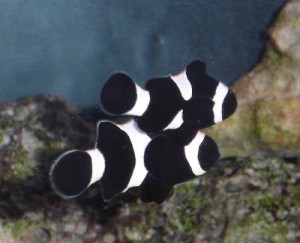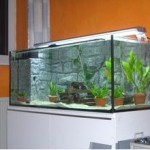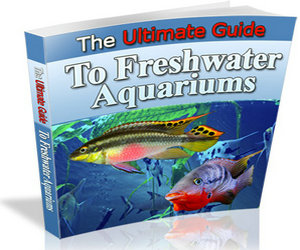
Selecting fish for a new aquarium set up can be somewhat tricky. One of the most difficult questions to ask an aquarium expert or pet store fish department employee is “What fish are the best to start a new aquarium installation with?” The problem is that the types of available fish are often quite extensive. Rather than approaching it this way, it is really a question of the ultimate population of the aquarium. It is best to determine what the aquarist means to keep when the fish tank has fully matured. That should be the biggest determining factor for selecting the first fish that are used to build the biological filter and allow it to mature.
No one can make a blanket statement as to what fish are best for a particular aquarium without knowing what species are available locally. Some general conclusions about selecting fish are about the most that can be made in this article. If the aquarium is a small aquarium meant to house a variety of passive fish, then species such as tetras and danios are often ones that are best to start off with.
It is best to immediately exclude some of the more inbred types like the neon tetra and the delicate cardinal tetras. They are often seriously stressed in these circumstances. Black Skirts, Serpae tetras and such, are much better beginning fish in many of these cases. Another excellent choice would be the zebra danio. The more hardy livebearers like platies are better suited than guppies in the beginning.
Stay away from selecting fish like the delicate assorted Dwarf Cichlids. They are colourful, but very shy and tend to die easily when water conditions are not ideal. Beginning the aquarium rarely results in ideal or even stable conditions. They will be great additions to the community aquarium later, after the biological filter has had ample time to mature and establish.
For larger aquariums, gouramies and barbs are often great fish to get started. The gouramies can breath air when stressed so the slow climbing of ammonia and nitrite are not as difficult for them to tolerate. Barbs are usually very hardy, but should be kept in schools of over 5 to allow them to vent their aggressive tendencies within their group rather than towards other tank mates.
Most African cichlids will weather the initialization phase quite readily. So will the majority of the common South American Cichlids (excluding the aforementioned Dwarf Cichlids). These types. however, are aggressive and will often severely limit the range of other fish you can keep with them. This includes both the beginning maturation as well as after the tank has aged and the aquarist desires to add new species and increase the fish tank’s population. They make a great medium to large aquarium fish, but don’t try to mix many others in with them.
The real determinant is what the ultimate vision for the aqurium is by the owner. Try selecting fish that are the most hardy species within your desired grouping as starter fish. You should consult with your local aquarium store’s experts to identify the ultimate species you want to keep, and then compatible hardy fish in the group.
Once the ultimate fish population is determined, choose fish in that select group only. Selecting fish in that set that are hardy is important. They must be able to survive the rigors of initiating the Nitrogen Cycle during the first six weeks after the aquarium is started. When you have an idea of the fish you want to keep, it makes it easier to decide which of that select group will make it best.
The other option is to select an unrelated fish species from the ones you really want to keep. This usually when the ultimate selection is really too delicate. Let them run through the maturation period. Once that is done, return the fish and get the ones you really plan to keep. Usually though, this is not an option for most aquarists. The rest of the family often becomes attached to the fish in the tank. Children and other family members rarely will allow a favorite pet to be sent back to the pet store.
There can be times where the fish that are originally in the aquarium do not take kindly to new, more delicate species after the run-in. That is why it is very important to have an idea of the ultimate inhabitants from the very start. That way the species selection of beginning fish can be more logically made right from the beginning starter fish and the ultimate mix easier to create.
















